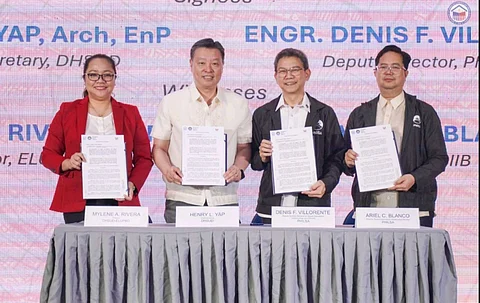
- NEWS
- the EDIT
- COMMENTARY
- BUSINESS
- LIFE
- SHOW
- ACTION
- GLOBAL GOALS
- SNAPS
- DYARYO TIRADA
- MORE

The Department of Human Settlements and Urban Development (DHSUD) announced on Tuesday that it has signed a Memorandum of Agreement (MoA) with the Philippine Space Authority (PhilSA), formalizing a collaboration to utilize space science and technology applications in advancing the housing and urban development industry.
The MoA, signed on 9 August, aims to support the DHSUD’s Environmental, Land Use, and Urban Planning and Development Bureau in digitalizing land use and urban planning processes through the PlanSmart for Sustainable Human Settlements platform.
PlanSmart, developed by the DHSUD and the Department of Science and Technology, is a digital, integrated, and automated platform designed to formulate climate and disaster risk-informed land use plans, open spaces, and resilient urban designs. It also aims to streamline the supervision of land use implementation.
The agreement will help develop an automated land use and zoning compliance monitoring tool called AutoCAM, which utilizes remote sensing, geographic information systems, and artificial intelligence. AutoCAM is intended to monitor the compliance of local government units with their approved comprehensive land use plans (CLUP) and zoning ordinances.
DHSUD Undersecretary Herry Yap highlighted the significance of the partnership with PhilSA in modernizing land use management.
“One of the cornerstones of today’s partnership is the provision of PhilSA’s expertise, data, and resources to make sure that our assessment processes can be incorporated so that they can provide accurate and timely data to support informed decision-making,” Yap said.
For PhilSA, the agreement represents a critical step in utilizing space technology and data to advance land use planning, human settlements, and urban development.
“This partnership aims to bridge that gap by leveraging the rich resources of space technology and data to realize socioeconomic value and benefit,” said PhilSA Space Operations, Infrastructure, and Industry Deputy Director General Denis Villorente.
MOA proponents said it could significantly enhance DHSUD’s capabilities in generating updated digital imagery for Climate and Disaster Risk Assessment and CLUPs.
